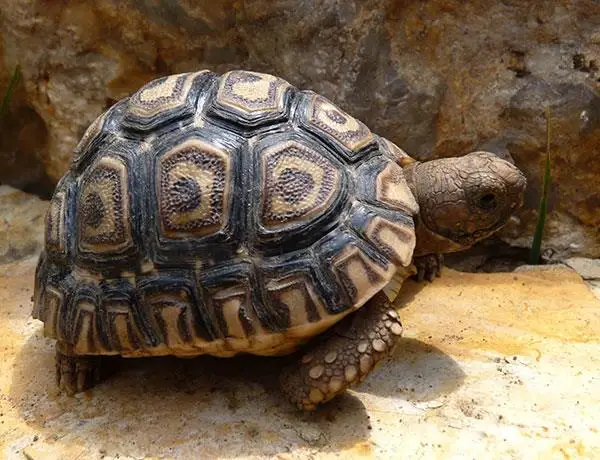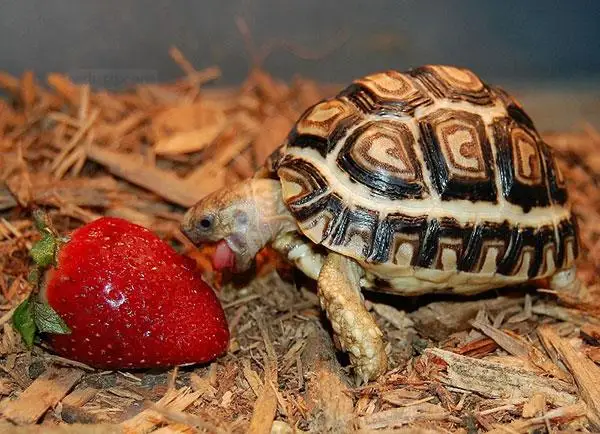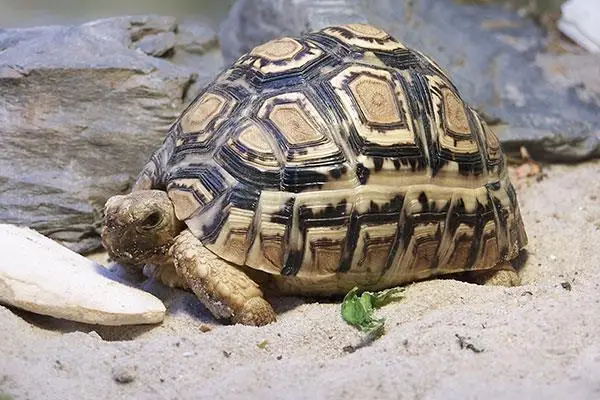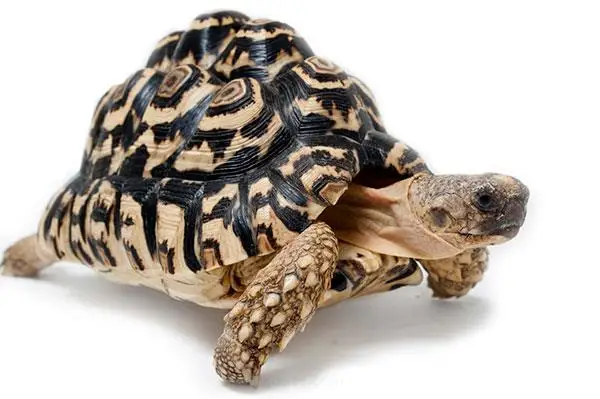Variety Overview
English Name: Leopard Tortoise
Alias: Leopard Tortoise
Origin: Southern Africa
Price: approximately $300 USD
Size: 35-45 cm (13.8-17.7 inches)
Weight: 35-45 kg (77-99 lbs)
Lifespan: 80-100 years
Development Origin
The leopard tortoise is a large and captivating species of land tortoise. They are widely distributed across the Sahara Desert region, including southern Sudan, Ethiopia, East Africa (including Natal), Zambia, Botswana, Namibia, Angola, and West Africa. Male leopard tortoises tend to be larger than females—a trait also observed in other Geochelone species like the Galápagos tortoise. In the wild, the largest known leopard tortoise is named Domkrag. It resided for many years in Addo National Elephant Park and measured 65.6 cm in length while weighing 43 kilograms. The largest recorded female leopard tortoise measured 49.8 cm in length and weighed 20 kilograms.

Morphological Features and Identification
The leopard tortoise ranks as the fourth largest tortoise species globally. Typically, adult specimens can grow up to 18 inches (460 mm) in length and weigh around 40 pounds (18 kg). Some records show that these tortoises can reach lengths of up to 70 cm (28 inches) and weights of up to 120 pounds (54 kg), with shell lengths extending to 24 inches (610 mm). A particularly rare case in Ethiopia documented a leopard tortoise measuring up to 100 cm. In extremely rare instances, those residing in high-humidity tropical rainforests like those in Sudan can grow as long as 45 inches.
Leopard tortoises have high, domed carapaces that often appear humped. Their skin is typically creamy yellow, adorned with black spots and stripes on their shells, each featuring unique patterns.
Maintenance Tips
Leopard tortoises require and thrive in spacious environments. Confining them to a small area can lead to insufficient exercise. Therefore, owners should provide them with a large enclosure. It’s crucial to ensure that the enclosure is sturdy since these tortoises are quite strong.
Additionally, use a heating pad along with a 300-watt UV heating lamp at night and in their sleeping area. Compared to smaller tortoise species, the cost of keeping leopard tortoises is relatively high. During summer, they should be allowed to bask in the sun frequently; ideally, they should remain within their enclosure.
Feeding Guidelines

Staple Food: Plant-based items such as vegetables, high-fiber plants, and pasture.
Wild Vegetables: Plantain, dandelion, sweet potato leaves, clover, dried leaves, alfalfa.
Purchased Vegetables: Rapeseed (canola), cabbage, choy sum (Chinese flowering cabbage), mustard greens, kale (leaf cabbage), collard greens (non-heading cabbage), malabar spinach (Basella alba), chrysanthemum greens (crown daisy), purple perilla leaves (shiso), romaine lettuce leaves (cos lettuce), cauliflower leaves. Occasionally include some lettuce or baby bok choy. Apples and bananas should be given sparingly. Once a week you can provide steamed pumpkin or carrots. Weekly supplementation with vitamins once and calcium powder once is recommended; avoid over-supplementation.
It is advisable to provide low-protein and high-fiber foods while avoiding daily provision of high-water-content fruits and vegetables. Place cuttlebone in the feeding box to allow them to grind their beaks and get additional calcium. Avoid giving leopard tortoises fruits as this can increase stomach acid levels leading to a higher risk of protozoan infections along with issues like stomach pain and diarrhea.

Variety Classification
Western Leopard Tortoise
This species is relatively uncommon in both captivity and in the wild. It primarily inhabits a small range in western South Africa and southern Namibia. One distinguishing feature is its dark-colored shell. Males of this subspecies tend to be larger than females, and overall, they are generally bigger than Eastern Leopard Tortoises.
Eastern Leopard Tortoise
This is the most widespread species, commonly found across Ethiopia and South Africa. Its shell typically features yellow and black colors. Generally speaking, it is smaller compared to the Western Leopard Tortoise (with exceptions being giant tortoises from Ethiopia and Somalia). In this subspecies, males are usually smaller than females. Additionally, adult Eastern Leopard Tortoises often have more pronounced domed shells. When young, these two subspecies can be distinguished by their carapace patterns: babcocki has black spots with a central line on the central scutes, while pardalis exhibits horizontal lines.
